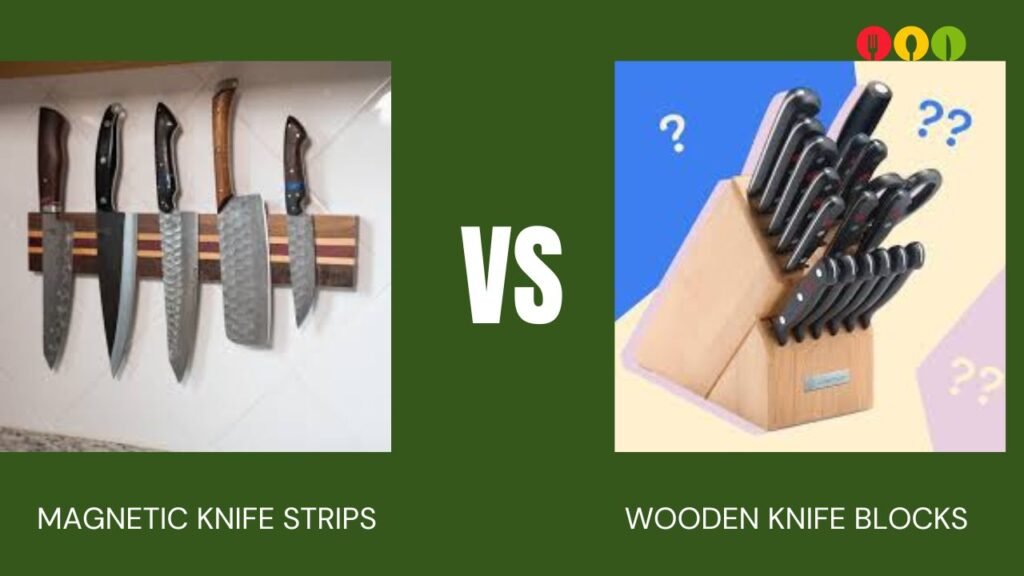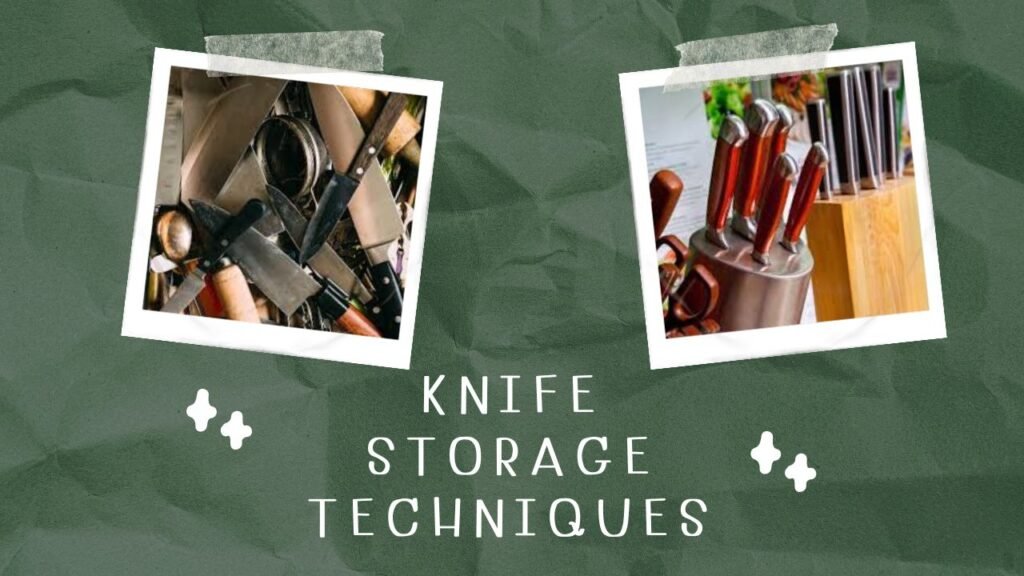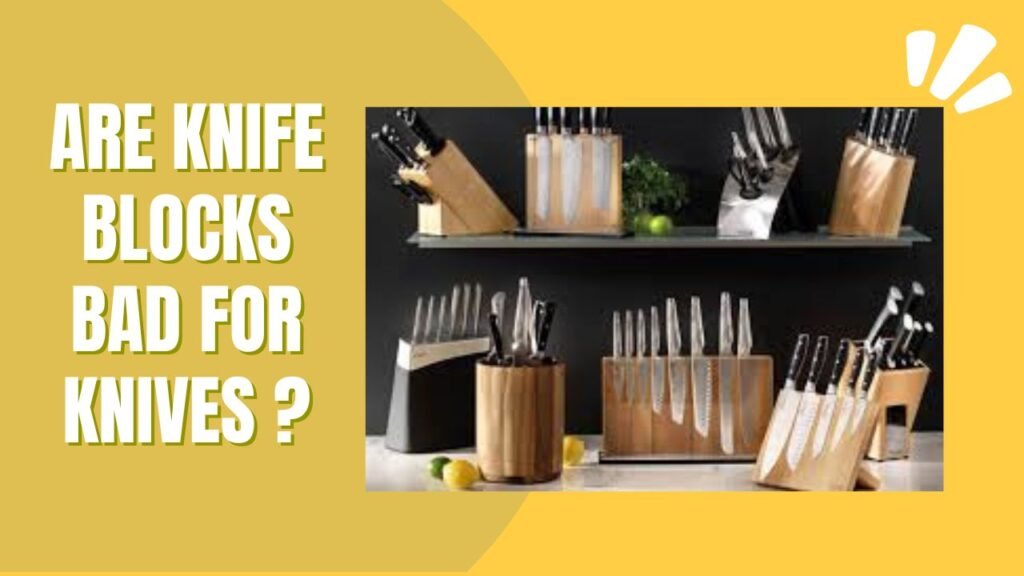Ever reached for your trusty knife block only to wonder, are knife blocks bad for knives? It’s a question that might cross your mind, especially if you’re passionate about maintaining your kitchen tools in top condition. Knife blocks are a staple in many kitchens, offering a convenient and organized way to store your blades. But do they do more harm than good? Let’s delve into the world of knife storage to uncover the truth about knife blocks and their effect on your beloved knives.
The Purpose and Function of Knife Blocks
Before addressing are knife blocks bad for knives, it’s important to understand what knife blocks are designed to do and how they fit into your kitchen routine.
What is a Knife Block?
A knife block is a storage solution that holds kitchen knives securely in individual slots or grooves. Typically made from wood, bamboo, or plastic, knife blocks aim to protect the blades from damage, keep them organized, and make them easily accessible during cooking. The design prevents knives from knocking against each other, which can dull blades over time.
Types of Knife Blocks
There are various types of knife blocks, each catering to different needs and preferences:
- Traditional Wooden Knife Blocks: Often made from hardwoods like maple or beech, these blocks have multiple slots to accommodate a variety of knives.
- Bamboo Knife Blocks: A sustainable alternative to wood, bamboo blocks are lightweight and eco-friendly.
- Plastic Knife Blocks: More affordable and available in numerous colors and styles, plastic blocks are durable and easy to clean.
- Magnetic Knife Blocks: Instead of slots, these blocks use magnets to hold knives in place, offering a sleek and modern look.
- In-Drawer Knife Storage: While not a traditional block, these systems store knives inside kitchen drawers, keeping them out of sight.
Potential Issues with Knife Blocks
Now, let’s tackle the core question: are knife blocks bad for knives? The answer isn’t black and white, but there are several potential issues to consider.
Blade Dulling
One of the primary concerns with knife blocks is the potential for blade dulling. When knives are stored in tight slots, the blades can come into contact with the sides of the block or other knives. This constant friction can gradually wear down the edge of the blade, making it less sharp over time.
Pro Tip: To minimize dulling, ensure your knives are inserted gently and avoid overcrowding the block. Each knife should have enough space to prevent unnecessary contact with others.
Bacterial Growth and Hygiene
Knife blocks, especially those made from porous materials like wood, can harbor bacteria. Moisture from washing knives and food particles can accumulate in the slots, creating an ideal environment for bacterial growth. This not only poses a hygiene risk but can also lead to unpleasant odors emanating from the block.
Did You Know? Regularly cleaning your knife block can significantly reduce the risk of bacterial buildup. Simply wipe it down with a mixture of vinegar and water or use a food-safe disinfectant.
Damage from Improper Storage
Storing knives improperly in a block can lead to various forms of damage. Heavy knives or those with delicate handles might get bent or chipped if they’re not placed carefully. Additionally, using a block that’s too small for your knife collection can force blades into cramped spaces, increasing the likelihood of damage.
Personal Insight: I once used a knife block that was too compact for my diverse set of blades. Not only did it dull my knives faster, but I also noticed small chips forming on some of the softer steel blades. Switching to a larger, more spacious block made a world of difference.

Comparing Knife Blocks to Alternative Storage Options
To determine if are knife blocks bad for knives, it’s helpful to compare them with other popular knife storage methods.
Magnetic Knife Strips
Magnetic strips are mounted on kitchen walls and use magnets to hold knives in place. This method keeps knives easily accessible while minimizing contact between blades.
- Pros:
- Easy to clean and maintain.
- Saves counter space.
- Provides a visually appealing display.
- Cons:
- Requires wall mounting.
- High-quality magnets can be expensive.
- Might not hold very heavy or large knives securely.
In-Drawer Storage
In-drawer knife storage systems organize knives inside kitchen drawers using slots or dividers. This keeps knives out of sight and reduces countertop clutter.
- Pros:
- Keeps knives hidden and safe.
- Reduces the risk of accidents.
- Often includes additional storage for utensils.
- Cons:
- Requires drawer space and proper organization.
- Potential difficulty in cleaning if food particles accumulate inside the drawer.
- Installation might be needed for some systems.
Knife Guards and Sheaths
Knife guards and sheaths offer individual protection for each knife, preventing accidental cuts and keeping blades sharp.
- Pros:
- Provides excellent blade protection.
- Prevents accidental cuts and extends knife lifespan.
- Portable for safe storage and transportation.
- Cons:
- Requires more storage space.
- Less convenient for frequent use.
- Can be cumbersome to handle multiple knives.
Pull-Out Knife Racks
Pull-out knife racks are built into kitchen cabinetry, allowing knives to be stored horizontally or vertically in a pull-out drawer.
- Pros:
- Keeps knives organized and easily accessible.
- Protects blades from damage.
- Can be integrated into existing kitchen cabinets.
- Cons:
- Requires installation within cabinetry.
- Can take up significant drawer space.
- May not accommodate larger knives or specialized blades.
Table: Pros and Cons of Different Knife Storage Methods
| Storage Method | Pros | Cons | Best For |
|---|---|---|---|
| Knife Blocks | Organized, easy access, protects blades | Can dull blades, harbors bacteria, requires maintenance | Traditional kitchens, display purposes |
| Magnetic Strips | Easy to clean, space-saving, attractive display | Requires wall mounting, might not hold heavy knives | Modern kitchens, minimalists |
| In-Drawer Storage | Out of sight, reduces countertop clutter, safe storage | Requires drawer space, potential for hidden debris | Small kitchens, organized users |
| Knife Guards/Sheaths | Excellent blade protection, portable | Requires more storage space, less convenient for use | Safe transport, high blade protection |
| Pull-Out Racks | Organized, easily accessible, protects blades | Requires installation, takes up drawer space | Integrated kitchens, spacious drawers |
Best Practices for Using Knife Blocks
If you decide that a knife block is the right choice for your kitchen, here are some best practices to ensure your knives stay sharp and your block remains sanitary.
Choose the Right Knife Block
Selecting a knife block that suits your knife collection is crucial. Look for a block with slots that match the size and shape of your knives to prevent them from touching each other.
- Material Matters: Opt for non-porous materials like high-grade plastic or stainless steel to minimize bacterial growth.
- Adequate Spacing: Ensure there’s enough space between slots to prevent knives from knocking against each other.

Proper Knife Storage Techniques
Storing knives correctly in the block can prolong their lifespan and maintain sharpness.
- Blade Down: Insert knives with the blade facing down to protect the edge.
- Handle Up: Alternatively, storing with the handle up can make it easier to grab the knife, but ensure the blade doesn’t rub against the sides.
- Avoid Overcrowding: Don’t force too many knives into the block, as this increases the risk of damage and dulling.
Regular Cleaning and Maintenance
Maintaining cleanliness is essential to keep both your knife block and knives in good condition.
- Weekly Cleaning: Empty the block weekly, wipe it down with warm, soapy water, and dry thoroughly.
- Deep Disinfecting: Monthly, disinfect the block using a vinegar-water solution or a food-safe disinfectant.
- Inspect for Damage: Regularly check the block for cracks or wear that can harbor bacteria and replace it if necessary.
Personal Experiences and Opinions
I’ve always been particular about kitchen hygiene, and for a long time, I relied on a traditional wooden knife block. Initially, it looked charming on my countertop and provided a rustic touch to my kitchen decor. However, after a few months of use, I began noticing dark spots and a persistent odor emanating from the block. Upon closer inspection, I realized that moisture and food particles had been trapped inside the slots, creating a breeding ground for bacteria.
Determined to find a solution, I switched to a magnetic knife strip. The transformation was remarkable. Not only were my knives more accessible and easier to clean, but the sleek design also enhanced the overall aesthetic of my kitchen. Without the hidden nooks where debris could accumulate, maintaining cleanliness became a breeze. This personal shift underscored the importance of choosing a storage method that aligns with both hygiene standards and practical needs.
Rhetorical Question
Have you ever considered how much the right knife storage method can impact both the lifespan of your knives and the overall hygiene of your kitchen? It’s worth pondering, especially when your kitchen is the heart of your home.
Expert Insights
To gain a more comprehensive understanding, let’s hear from experts in kitchen hygiene and culinary tools.
Culinary Professional Insights
Chef Jamie Oliver, a renowned chef and food advocate, emphasizes the importance of proper knife storage for both performance and safety. “A clean knife block is essential in any kitchen. It not only ensures that your knives remain sharp and effective but also prevents the spread of harmful bacteria. Regular cleaning and proper storage can make all the difference.”
Health and Safety Experts
Dr. Maria Gonzalez, a public health expert, highlights the potential risks associated with improper knife block maintenance. “Knife blocks can harbor bacteria like E. coli and Salmonella if not cleaned regularly. It’s crucial to establish a consistent cleaning routine and consider the material of your knife block to minimize these health risks.”
Knife Manufacturers
Wüsthof, a leading knife manufacturer, advises, “Our knife blocks are designed with hygiene in mind, featuring non-porous materials and easy-to-clean surfaces. However, user maintenance is key. Even the best-designed blocks require regular cleaning to ensure they remain sanitary and effective in protecting knives.”
Table: Maintenance Tips for Knife Blocks vs. Alternative Storage
| Storage Method | Maintenance Tips | Ease of Maintenance |
|---|---|---|
| Knife Blocks | Regular cleaning, avoid overcrowding, use non-porous materials | Moderate |
| Magnetic Strips | Wipe down regularly, avoid placing too many knives together | Easy |
| In-Drawer Storage | Clean the drawer regularly, organize knives properly | Moderate |
| Knife Guards/Sheaths | Clean each guard after use, store in a dry place | Easy to Moderate |
| Pull-Out Racks | Clean inside the rack periodically, organize knives neatly | Moderate |
Conclusion
So, are knife blocks bad for knives? The answer depends largely on how you use and maintain them. Knife blocks can be a convenient and aesthetically pleasing storage solution, but they come with potential downsides like blade dulling and bacterial growth if not properly cared for. By choosing the right type of block, employing proper storage techniques, and maintaining a regular cleaning routine, you can mitigate these risks and enjoy the benefits of organized knife storage.
However, if you prioritize hygiene and ease of maintenance, alternative storage options like magnetic strips or in-drawer systems might be more suitable. Ultimately, the best storage method is one that aligns with your kitchen habits, aesthetic preferences, and commitment to cleanliness.
Rhetorical Question
Isn’t it worth exploring different knife storage solutions to find what works best for your kitchen’s hygiene and your knives’ longevity? Making an informed choice can lead to a safer, more efficient, and visually appealing culinary space.
Maintaining sharp, clean knives is essential for a functional kitchen, and understanding the impact of your storage choices plays a crucial role in this upkeep. Whether you stick with a traditional knife block or opt for a more modern storage solution, prioritizing cleanliness and proper maintenance will ensure your knives remain in excellent condition for years to come.
Happy cooking and safe storing!


